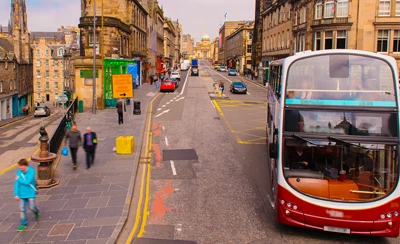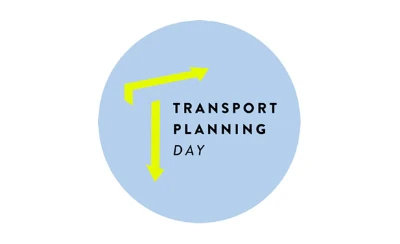TPS' review of the Chancellor's Growth Plan 2022
The Transport Planning Society’s review of the Chancellor of the Exchequer’s Growth Plan 2022
27 September 2022
A few days ago, on 23 September, Kwasi Kwarteng published his Growth Plan 2022, firmly concentrating on stimulating economic growth. This review by the Transport Planning Society focuses on the transport policy and infrastructure aspects of the plan only.
Infrastructure as a driver of economic growth
In the Growth Plan the government commits to speed up the delivery of infrastructure by
- reducing the burden of environmental assessments
- reducing bureaucracy in the consultation process
- reforming habitats and species regulations
- increasing flexibility to make changes to a DCO once it has been submitted.
Considerations of the impact of transport infrastructure and policy on the environment, today but also in the longer-term future, and inclusive consultation are cornerstones of the current planning process that should not be lightly undermined for growth. The causal link between transport improvements, and particular road improvements, and the economy is broken.
Recent studies elsewhere have postulated that public investments in road infrastructure have non-significant effects on economic growth1; whilst other studies suggest a weakening influence of road networks (and transport more generally) on location choice by residents and employers, and hence the economy2.
The importance of consultation and engagement
Environmental assessments and consultations are neither an unnecessary burden nor excessively bureaucratic. Low traffic neighbourhoods, the heated debates on their pros and cons, associated vandalism and legal wranglings following their introduction illustrate the importance and value of considered consultation. TPS does not expect that diminished consultation will reduce delivery timescales for controversial infrastructure projects, in fact quite the opposite. In Wales, the review of WelTAG3, published less than two months ago, instead insists on engagement and consultation, going as far as promoting a direct involvement or participation in developing and delivering infrastructure projects.
Using National Policy Statements well
The Growth Plan announces that the government will prioritise the delivery of National Policy Statements for national networks, and a cross-government action plan for reform of the Nationally Significant Infrastructure planning system. The Transport Planning Society welcomes these National Policy Statements and reforms to the planning system, subject to understanding the details. A National Transport Strategy is long overdue. However, we are concerned about suggested reforms to accelerate roads delivery, including by consenting more through the Highways Act 1980 and by considering options for changing the Judicial Review system to avoid claims which cause unnecessary delays to delivery.
Given road transport’s contribution to greenhouse gas emissions, road expansion needs to remain carefully scrutinized, and its business case always reflect that increased road capacity generates additional traffic4. The Society takes the view that instead of expansion, the focus should be on maintenance of the existing highway assets and making better use of these.
Valuing travel times – or not
By mistakenly relying on transport infrastructure, and particularly road infrastructure, to stimulate growth by reducing travel times and removing congestion, the government may sacrifice many of the safeguards that have been put in place to avoid disproportionate damage to the environment and the population’s well-being.
Contrast this with the recent ministerial statement on the review of WelTAG, Welsh Transport Appraisal Guidance:
… precipitated by ministerial concerns that the value placed by appraisals on driver journey time savings has led to outcomes directly contrary to some of Welsh Government’s highest priorities, including addressing climate change and toxic air pollution by reducing traffic and achieving mode shift, and improving public health through higher levels of walking and cycling…. it would be perverse to consider these time savings as a benefit without fully accounting for the offsetting disbenefits.
The Society also invites the Chancellor to look across the border to Scotland where, rather than stimulating traffic growth, the government has set a vehicle km reduction target of 20% by 20305.
Accelerating the right infrastructure projects
The Transport Planning Society also notes the infrastructure projects that the government will prioritise for acceleration. We will not be the only ones that have calculated that the list contains 86 roads projects, 10 rail projects, only 16 local transport projects and 2 decarbonisation projects.
The Growth Plan 2022 is in danger of becoming a transport emissions growth plan, contradicting the government’s intentions set out in 2021 in ‘Decarbonising transport: a better, greener Britain’. We suggest that the designs for any of the road’s projects listed for possible acceleration also include safe provision for active mode alternatives, and reflect the needs of all sustainable modes including public transport.
The growth agenda needs to be balanced against net zero commitments in the Transport Decarbonisation Plan and must promote levelling up so that everybody benefits. Remember that only 35% of UK households in the lowest income decile has access to at least one car, whereas this figure is 90% or higher for the richest four deciles6.
As it stands, the plan does little to improve the quality of life across our communities with its focus on large road infrastructure, locking the country into a car-based and (certainly in the short to medium term) carbon intensive future. A smarter focus on smaller locally led projects would be more likely to deliver a low carbon future, healthier communities, and stimulate growth by invigorating local economies.
Main author: Tom van Vuren, Policy Director at the Transport Planning Society. The Transport Planning Society (TPS) is the professional association for Transport Planners in the UK and Republic of Ireland. We represent 1,600 individual members and 38 businesses in the profession.
1 Michael Iacano and David Levinson. (2015) Mutual causality in road network growth and economic development. Transport Policy [https://conservancy.umn.edu/bitstream/handle/11299/180063/StatePanel.pdf?sequence=1&utm_source=substack&utm_medium=email]
2 Besime Fekri Ziberi. (2021) The econometric approach of the impact of public investment in the road infrastructure in the economic growth of Kosovo. Management dynamics in the knowledge economy. [http://www.zbw.eu/econis-archiv/bitstream/11159/6040/1/1765435188_0.pdf?utm_source=substack&utm_medium=email]
3 Welsh Government. (2022) Welsh Transport Appraisal Guidance (WelTAG) 2022 Consultation draft. Welsh Government. [https://gov.wales/sites/default/files/consultations/2022-08/welsh-transport-appraisal-guidance-weltag-2022_0.pdf]
4 Department for Transport. (2018) Latest Evidence on Induced Travel Demand: An Evidence Review. Department for Transport [https://www.gov.uk/government/publications/induced-travel-demand-an-evidence-review]
5 Scottish Government. (2022) 20% car kilometre reduction route map. Scottish Government. [https://consult.gov.scot/transport-scotland/car-kilometre-reduction-route-map/#:~:text=Overview,almost%2040%25%20of%20transport%20emissions]
6 ONS. (2019) Percentage of households with cars by income group, tenure and household composition: Table A47. ONS. [https://www.ons.gov.uk/peoplepopulationandcommunity/personalandhouseholdfinances/expenditure/datasets/percentageofhouseholdswithcarsbyincomegrouptenureandhouseholdcompositionuktablea47]








